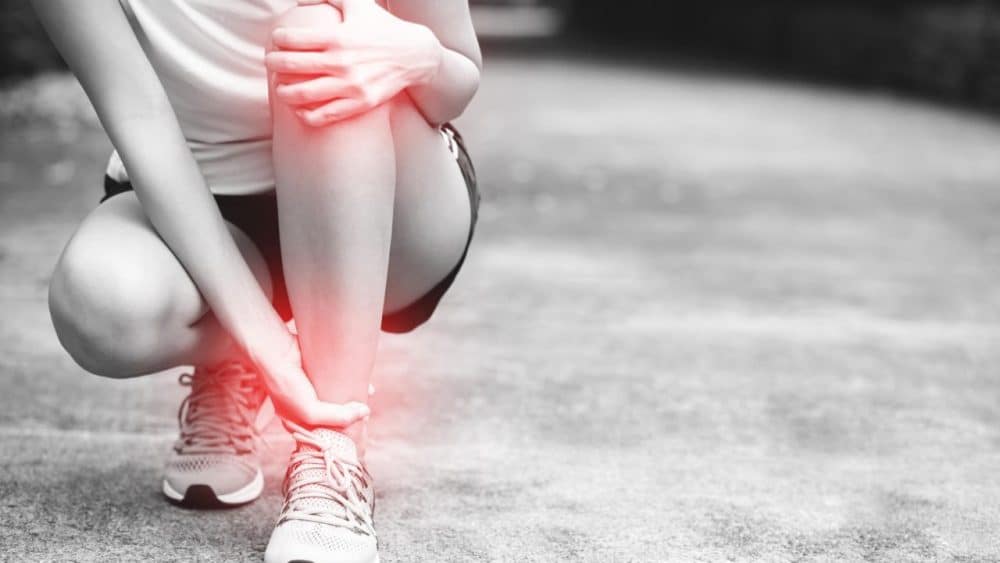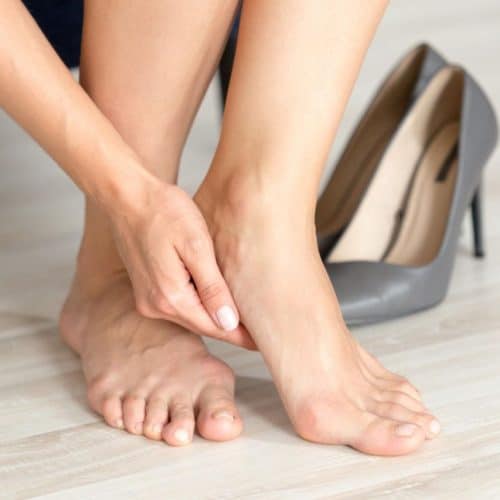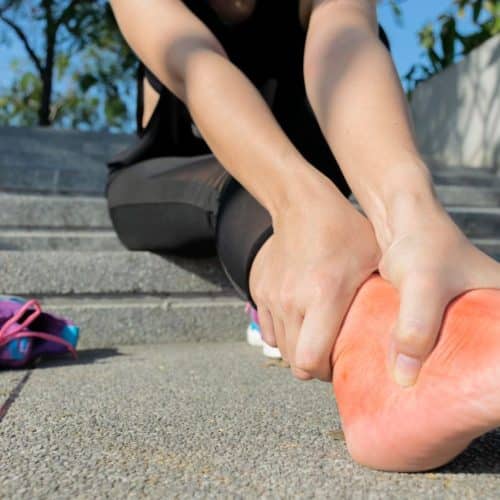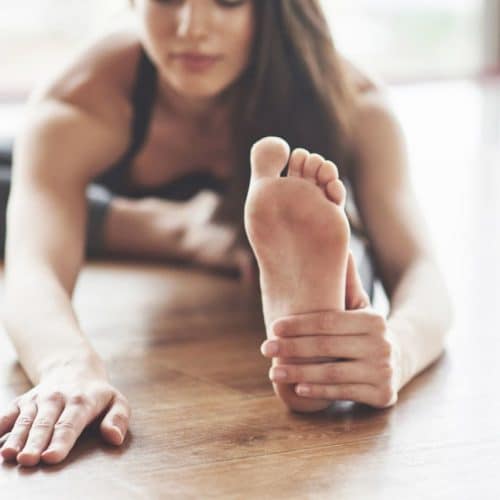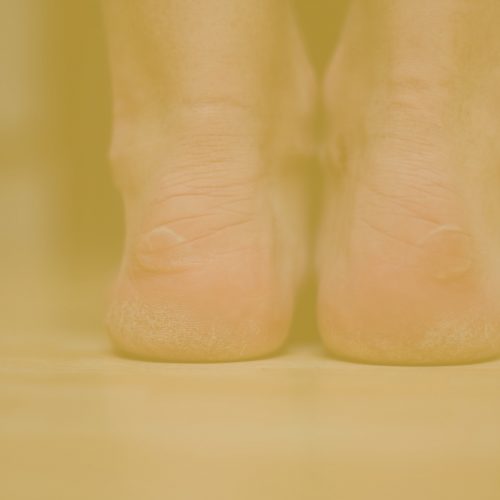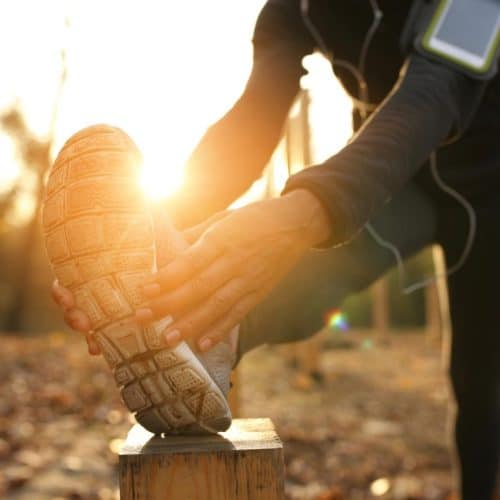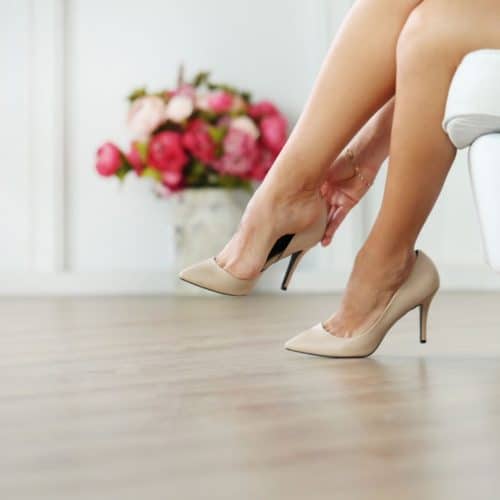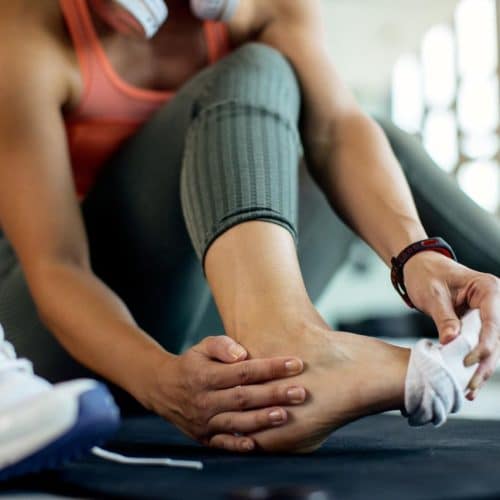Do you love the exhilarating rhythm of jumping rope but find yourself held back by knee pain? Whether you’re a fitness enthusiast or just looking for a fun way to stay active, knee discomfort can damage your efforts.
The good news is there are effective ways to sidestep knee pain and continue enjoying the benefits of this fantastic workout. Imagine bounding along effortlessly, the rope swishing through the air – without that nagging knee ache. This article will explore the top strategies to keep your knees happy while jumping rope.
Jumping rope is a fantastic cardiovascular exercise that strengthens your body and boosts your agility. However, incorrect form and overexertion can lead to knee strain, inhibiting progress. To prevent this, maintain proper alignment and cushion the impact on your knees.
Ensure that your knees are slightly bent upon landing and that you jump with a gentle bounce, not a jarring thud. Incorporating well-fitted shoes with adequate shock absorption can also significantly alleviate the pressure on your joints. By adhering to these techniques, you’ll be well on your way to enjoying pain-free rope jumping sessions that elevate your fitness journey.
But what if you’re already experiencing knee discomfort? Don’t worry – we’ve got you covered. It’s time to embrace the joy of movement and achieve your fitness goals without compromise.
Choose the Right Rope
Selecting the appropriate jump rope ensures a comfortable and safe jumping experience. The right rope can make a significant difference in preventing knee pain and reducing strain on your joints.
1. Consider Rope Length
One of the first factors to consider is the length of the jump rope. The ideal length varies based on your height and skill level. To find the right length, step on the middle of the rope with one foot and pull the handles up. The handles should reach your armpits. This measurement provides a good starting point, but you can adjust it based on your preference.
2. Rope Material
Jump ropes come in various materials, such as nylon, PVC, and leather. Each material offers different levels of durability, weight, and flexibility. A lightweight rope with smooth rotation can help prevent unnecessary strain on your wrists and shoulders, indirectly affecting your knee joints.
3. Handle Comfort
The handles of the rope should be comfortable to grip. Look for handles with ergonomic designs and padding to reduce friction and enhance your overall jumping experience. Handles that are too thin or uncomfortable can cause your grip to become uneven, leading to incorrect form and potential knee discomfort.
4. Adjustable Ropes
Opt for a jump rope with adjustable length options. This feature lets you fine-tune the rope’s length as your skill and fitness level improve. An adjustable rope also accommodates different users if you share the equipment with others.
5. Weighted Ropes
Consider using a weighted jump rope, especially if you’re experienced and looking to add intensity to your workouts. Weighted ropes engage your muscles more and can enhance the cardiovascular benefits of jumping rope. However, be cautious with weighted ropes, as they can increase impact on your knees if not used correctly.
6. Test Before Purchase
Try out different ropes before making a purchase. This allows you to assess how comfortable the handles are in your hands, how smoothly the rope rotates, and whether the length feels suitable for your height.
Wear Supportive Footwear
When engaging in any physical activity, including jumping rope, wearing the right footwear is paramount for preventing injuries and ensuring overall comfort. Your shoes can significantly impact the health of your knees and joints, making it crucial to opt for supportive and appropriate athletic footwear.
1. Cushioning and Shock Absorption
The most critical aspect of jump rope shoes is their ability to provide adequate cushioning and shock absorption. Look for shoes with ample cushioning in the midsole and heel areas. This cushioning helps absorb the impact of each jump, reducing the stress on your knees upon landing.
2. Arch Support
Supportive footwear should also offer sufficient arch support. Jumping rope involves repetitive movements that can strain the arches of your feet. Proper arch support helps distribute your body weight evenly and prevents overpronation or supination, which can lead to misalignment and knee discomfort.
3. Stability and Traction
Stability is key when it comes to jump rope shoes. Look for shoes with a stable base and a snug fit to prevent your feet from sliding inside the shoes while jumping. A rubber outsole with good traction ensures a solid grip on the surface, reducing the risk of slipping and twisting your knees.
4. Lightweight and Breathable
While support is essential, the shoes should also be lightweight and breathable. Too heavy shoes can lead to fatigue and hinder your agility during jumping rope. Breathable materials help keep your feet dry and comfortable, reducing the likelihood of blisters and discomfort.
5. Proper Fit
Ensure that the shoes fit properly. Ill-fitting shoes can cause friction, blisters, and discomfort, ultimately affecting your jumping form and leading to knee strain. When trying on jump rope shoes, wear the same type of socks you plan to use during your workouts to get an accurate fit.
6. Avoid Everyday Sneakers
While everyday sneakers might be comfortable for walking, they might not provide the specific support needed for jump rope activities. Investing in shoes designed for athletic performance can greatly enhance your jump rope experience and safeguard your knee health.
7. Replace Worn-Out Shoes
Even the best jump rope shoes will lose their supportive properties over time with regular use. Keep an eye on the condition of your shoes and replace them when you notice signs of wear, such as flattened cushioning or worn-out tread. Using worn-out shoes can lead to inadequate support and increased knee strain.
By selecting jump rope shoes that prioritise cushioning, support, stability, and a proper fit, you’re taking a significant step in preventing knee pain and promoting overall joint health. Remember that your feet serve as the foundation for your body’s movements, and ensuring their comfort and support will positively impact your jumping rope experience while minimising the risk of knee discomfort.
Warm Up Your Muscles
Warming up your muscles before jumping rope is essential for preparing your body for the intensity of the workout. A proper warm-up routine increases blood flow, improves flexibility, and reduces the risk of injury, including knee pain. Here’s a step-by-step guide to an effective warm-up:
- Jumping Jacks: Start with a set of jumping jacks to get your heart rate up and engage your entire body.
- Arm Circles: Stand with your arms extended to the sides and make slow circular motions with your arms. This warms up your shoulders and upper body.
- Leg Swings: Hold onto a support and swing one leg forward and backward. This dynamic stretch helps loosen up your hip joints.
- Ankle Rotations: Rotate your ankles in clockwise and counterclockwise directions to improve ankle mobility.
- Hip Circles: Stand with your hands on your hips and make circular motions with your hips. This warms up the hip joints and lower back.
- Torso Twists: Gently twist your torso from side to side, engaging your core muscles and preparing them for movement.
- Arm Swings: Swing your arms forward and backward, gradually increasing the range of motion. This helps warm up your shoulders and upper back.
- Leg Raises: Stand on one leg and lift the opposite leg forward, to the side, and backward in controlled movements. This warms up your leg muscles.
- High Knees: March in place while lifting your knees as high as possible. This further elevates your heart rate and prepares your lower body.
- Dynamic Stretches: Perform dynamic stretches like leg swings, hip circles, and arm circles to increase the range of motion in your joints.
Spending 5-10 minutes on a comprehensive warm-up routine’ll activate your muscles, enhance joint flexibility, and mentally prepare yourself for a successful jump rope session. Warm muscles are less prone to injury, including knee strain, and enable you to perform at your best while minimising the risk of discomfort.
Maintain Proper Form
Maintaining proper form while jumping rope prevents knee pain and ensures a safe and effective workout. Proper form enhances the benefits of jumping rope and minimises the impact on your knees. Follow these guidelines to maintain the correct form:
- Stand Tall: Keep an upright posture with your head facing forward. Avoid slouching or leaning forward, as this can strain your back and knees unnecessarily.
- Engage Your Core: Tighten your core muscles throughout the exercise. This provides stability to your body and helps distribute the impact more evenly.
- Bend Your Knees Slightly: Keep your knees slightly bent, absorbing shock when you land and reducing the impact on your joints.
- Keep Elbows Close: Keep your elbows close to your sides and forearms parallel to the ground. This minimises excessive movement and strain on your shoulders.
- Use Wrist Movements: Rotate the rope using your wrists, not your entire arms. This conserves energy and reduces strain on your shoulder and elbow joints.
- Land Softly: As you jump, land softly on the balls of your feet. Avoid heavy landings on your heels, as this can transmit shock to your knees.
- Maintain a Rhythm: Find a steady jumping rhythm that allows you to control your movements. Avoid jumping too high, as excessive impact can lead to discomfort.
- Look Straight Ahead: Keep your gaze forward, not at your feet or the rope. Looking down can strain your neck and disrupt your balance.
- Use Minimal Movements: Jump only high enough to clear the rope. Excessive jumping height can lead to increased impact on your knees.
- Relax Your Shoulders: Keep your shoulders relaxed, preventing tension buildup in your upper body.
- Breathe Naturally: Breathe rhythmically and avoid holding your breath. Proper breathing supports your muscles and maintains your energy level.
Maintaining proper form throughout your jump rope session prevents knee pain and ensures a productive workout. By paying attention to your body mechanics and following these guidelines, you can jump rope comfortably, reduce knee strain, and enjoy a safe and effective exercise routine.
Land Softly
Landing softly is a fundamental technique for jumping rope while safeguarding your knee health. How you land after each jump minimises the impact on your knees and reduces the risk of discomfort or injury. When you land softly, you effectively absorb the shock of the impact, preventing it from travelling through your joints.
Begin by maintaining a slight bend in your knees as you jump. This helps prepare your muscles for impact and allows for controlled landings. As you jump, focus on landing on the balls of your feet. This distributes the force of impact more evenly, reducing the strain on your knees.
Imagine landing on a delicate surface, such as a cushion or a soft patch of grass. This mental imagery can help you internalise the concept of landing gently and encourage you to avoid heavy landings that can jar your knees.
Keep your movements fluid and controlled. Avoid stiffening up or tensing your legs upon landing, as this can increase the shock absorbed by your knees. Instead, aim for a smooth transition from jumping to landing, maintaining a rhythmic flow.
Pay attention to your landings as you progress in your jump rope routine. It’s easy to become fatigued and let your form slip, leading to heavier landings. Stay mindful and consistently focus on landing softly, especially as you tire.
Remember that landing softly isn’t just about protecting your knees—it also contributes to an efficient and effective workout. By reducing the impact on your joints, you can jump for longer periods without experiencing discomfort. Incorporating this technique into your jump rope routine can significantly improve your overall comfort and the health of your knees.
Avoid Overtraining
Avoiding overtraining is crucial to ensuring the long-term health of your knees and preventing knee pain when jumping rope. While consistent exercise is essential for progress, pushing yourself too hard or too quickly can lead to overuse injuries, including knee discomfort. Overtraining strains your muscles, joints, and connective tissues, potentially leading to pain and inflammation.
Pay attention to your body’s signals. If you experience persistent fatigue, soreness, or discomfort in your knees after jumping rope, it’s a sign that you might be overtraining. Listen to your body and allow for adequate rest and recovery.
Gradually increase the intensity and duration of your jump rope sessions. Avoid sudden spikes in your workout intensity, as this can increase the risk of injury. Instead, progress gradually to give your body—including your knees—time to adapt.
Incorporate rest days into your routine. Rest days allow your muscles and joints to recover and repair. Consider alternating high-impact jump rope sessions with low-impact exercises like swimming, cycling, or yoga to provide variety and reduce knee strain.
Prioritise quality over quantity. It’s not about how many jumps you can do in a single session but how well you execute each jump. Focus on maintaining proper form and technique rather than pushing for higher numbers.
Pay attention to your technique. Fatigue can lead to sloppy form, which increases the risk of injury. If you notice your form deteriorating during a session, it’s a good indication that you should take a break.
Stay hydrated and nourished. Dehydration and inadequate nutrition can contribute to muscle fatigue and compromise your body’s ability to recover effectively. Ensure you’re properly hydrated and consuming a balanced diet.
Get enough sleep. Sleep is crucial for recovery and muscle repair. Aim for 7-9 hours of sleep each night to support your body’s healing processes.
Consult a fitness professional if needed. If you need more clarification about your training intensity or approach, consider seeking guidance from a fitness expert. They can help tailor a workout plan that suits your fitness level and goals while minimising the risk of overtraining.
By striking a balance between challenging yourself and allowing for adequate rest and recovery, you can enjoy the benefits of jump rope without overloading your knees or risking discomfort. Consistency and moderation are key to achieving your fitness goals while maintaining optimal knee health.
Strengthen Your Leg Muscles
Strong leg muscles are essential for providing stability and support to your knees while jumping rope. Incorporating leg-strengthening exercises into your routine enhances your overall performance and helps prevent knee pain and discomfort. Here are some effective exercises to target and strengthen your leg muscles:
1. Squats
Squats are a versatile and effective exercise for building leg strength. Here’s how to perform squats correctly:
- Take a standing position with your feet about hip-width apart.
- Engage your core muscles and keep your back straight.
- Bend your knees and push your hips back like sitting in an imaginary chair.
- Lower down until your thighs are parallel to the ground or as far as your mobility allows.
- Push through your heels to return to the starting position.
2. Lunges
Lunges work multiple muscles in your legs and help improve balance and stability. Here’s how to do lunges:
- Start by standing with your feet together.
- Step one foot forward and lower your body until both knees are at 90-degree angles.
- Ensure your front knee is directly above your ankle and your back knee hovers above the ground.
- Push through your front heel to return to the starting position. Alternate legs for each repetition.
3. Calf Raises
Calf raises target the calf muscles, which play a role in absorbing impact during jumping. Here’s how to perform calf raises:
- Take a standing position with your feet about hip-width apart.
- Raise your heels off the ground as high as possible by pushing through the balls of your feet.
- Lower your heels back down and repeat the movement.
4. Step-Ups
Step-ups are a form of functional exercise that builds leg strength by simulating the motion of jumping rope. Step-ups can be performed as follows:
- Stand in front of a sturdy bench or platform.
- Step one foot onto the bench and push through that foot to lift your body up.
- Bring your other foot up onto the bench and then step back down. Alternate legs for each repetition.
5. Wall Sits
Wall sits are an isometric exercise that engages your quadriceps. Here’s how to perform wall sits:
- Place your back against a wall and place your feet about hip-width apart. Hold this position.
- Slide down the wall, bending your knees until your thighs parallel the ground.
- Hold this position for a set amount of time, then push through your heels to stand back up.
Incorporate these leg-strengthening exercises into your workout routine 2-3 times weekly. Start with 2-3 sets of 10-15 repetitions for each exercise and gradually increase the intensity as your strength improves. Strengthening your leg muscles supports your knees and enhances your overall athletic performance, allowing you to jump rope more effectively and comfortably.
Use Knee-Friendly Surfaces
The surface you jump on can significantly impact the strain your knees experience during jump rope sessions. Opting for knee-friendly surfaces can help minimise the shock and impact on your joints, reducing the risk of knee pain. Consider these options when selecting a surface for your jump rope workouts:
- Rubber Flooring: Jumping on rubber flooring provides excellent shock absorption, which can significantly reduce the impact on your knees. Many gyms have rubberised surfaces specifically designed to minimise joint strain.
- Grass: If you can access a grassy area, it can be a gentle surface for jumping rope. However, ensure the ground is even and debris-free to prevent tripping.
- Cushioned Mats: Exercise mats or yoga mats can provide a softer surface for jumping. These mats offer cushioning and can be placed on various indoor or outdoor surfaces.
- Dance Studio Floors: Dance studios often have sprung floors designed to absorb impact. These floors can be ideal for jump rope workouts, as they balance support and cushioning.
- Indoor Tracks: If available, indoor tracks with rubberised surfaces provide a consistent and knee-friendly option for jumping rope.
- Avoid Concrete and Hard Surfaces: Concrete and other hard surfaces can positively impact your knees. While jumping on these surfaces occasionally might not cause an issue, it’s best to avoid them for extended jump rope sessions.
Remember that the surface you choose should be both supportive and comfortable. Proper footwear with adequate cushioning can also enhance your knees’ protection from the impact. By selecting a knee-friendly surface and paying attention to your technique, you can enjoy jump rope workouts while minimising the strain on your knees.
Conclusion
Incorporating jumping rope into your fitness routine can be a fantastic way to stay active and boost cardiovascular health. However, the potential for knee pain can be a concern for many enthusiasts. The good news is that there are effective strategies you can adopt to minimise the risk of knee discomfort while enjoying this exhilarating exercise.
Remember, proper technique is paramount. Wear appropriate footwear with adequate cushioning to absorb impact and reduce knee strain. Gradually increase the intensity and duration of your sessions, allowing your body to adapt at its own pace. Maintaining a healthy body weight can also significantly alleviate the pressure on your knees.
Cross-training and incorporating strength exercises targeting your lower body muscles can enhance your knees’ support. Strengthening your quadriceps, hamstrings, and calves can create a stable foundation for your knee joints, reducing the likelihood of pain during rope jumping.
Additionally, always prioritise a thorough warm-up before you start jumping. Dynamic stretches focusing on your legs and knees can enhance blood flow and flexibility, preparing your joints for the upcoming activity.
Lastly, pay attention to the importance of recovery. After a jump rope session, gentle static stretches elongate your muscles and promote flexibility. If you experience discomfort, remember the RICE protocol: rest, ice, compression, and elevation.
How will you incorporate these strategies into your jumping rope routine to ensure knee pain prevents you from achieving your fitness goals?
By integrating these practical tips into your jumping rope regimen, you’re setting yourself up for a pain-free and enjoyable experience. Remember, consistency and patience are key. Your journey towards mastering this dynamic exercise while safeguarding your knee health starts with these proactive measures. So, are you ready to jump your way to fitness success while keeping knee pain at bay?
Content Summary
- The good news is there are effective ways to sidestep knee pain and continue enjoying the benefits of this fantastic workout.
- Selecting the appropriate jump rope ensures a comfortable and safe jumping experience.
- The right rope can make a significant difference in preventing knee pain and reducing strain on your joints.
- One of the first factors to consider is the length of the jump rope.
- The handles of the rope should be comfortable to grip.
- Opt for a jump rope with adjustable length options.
- Consider using a weighted jump rope, especially if you’re experienced and looking to add intensity to your workouts.
- When engaging in any physical activity, including jumping rope, wearing the right footwear is paramount for preventing injuries and ensuring overall comfort.
- Look for shoes with ample cushioning in the midsole and heel areas.
- Supportive footwear should also offer sufficient arch support.
- While support is essential, the shoes should also be lightweight and breathable.
- Ensure that the shoes fit properly.
- Investing in shoes designed for athletic performance can greatly enhance your jump rope experience and safeguard your knee health.
- By selecting jump rope shoes that prioritise cushioning, support, stability, and a proper fit, you’re taking a significant step in preventing knee pain and promoting overall joint health.
- Warming up your muscles before jumping rope is essential for preparing your body for the intensity of the workout.
- A proper warm-up routine increases blood flow, improves flexibility, and reduces the risk of injury, including knee pain.
- Start with a set of jumping jacks to get your heart rate up and engage your entire body.
- Perform dynamic stretches like leg swings, hip circles, and arm circles to increase the range of motion in your joints.
- Spending 5-10 minutes on a comprehensive warm-up routine’ll activate your muscles, enhance joint flexibility, and mentally prepare yourself for a successful jump rope session.
- Maintaining proper form while jumping rope prevents knee pain and ensures a safe and effective workout.
- Proper form enhances the benefits of jumping rope and minimises the impact on your knees.
- Keep an upright posture with your head facing forward.
- Landing softly is a fundamental technique for jumping rope while safeguarding your knee health.
- Begin by maintaining a slight bend in your knees as you jump.
- As you jump, focus on landing on the balls of your feet.
- Keep your movements fluid and controlled.
- Pay attention to your landings as you progress in your jump rope routine.
- Stay mindful and consistently focus on landing softly, especially as you tire.
- Remember that landing softly isn’t just about protecting your knees—it also contributes to an efficient and effective workout.
- Avoiding overtraining is crucial to ensuring the long-term health of your knees and preventing knee pain when jumping rope.
- If you experience persistent fatigue, soreness, or discomfort in your knees after jumping rope, it’s a sign that you might be overtraining.
- Listen to your body and allow for adequate rest and recovery.
- Gradually increase the intensity and duration of your jump rope sessions.
- Incorporate rest days into your routine.
- Pay attention to your technique.
- Stay hydrated and nourished.
- Ensure you’re properly hydrated and consuming a balanced diet.
- Get enough sleep.
- Incorporating leg-strengthening exercises into your routine enhances your overall performance and helps prevent knee pain and discomfort.
- Squats are a versatile and effective exercise for building leg strength.
- Take a standing position with your feet about hip-width apart.
- Step-Ups
- Step-ups are a form of functional exercise that builds leg strength by simulating the motion of jumping rope.
- Incorporate these leg-strengthening exercises into your workout routine 2-3 times weekly.
- The surface you jump on can significantly impact the strain your knees experience during jump rope sessions.
- Opting for knee-friendly surfaces can help minimise the shock and impact on your joints, reducing the risk of knee pain.
- Jumping on rubber flooring provides excellent shock absorption, which can significantly reduce the impact on your knees.
- Concrete and other hard surfaces can positively impact your knees.
- By selecting a knee-friendly surface and paying attention to your technique, you can enjoy jump rope workouts while minimising the strain on your knees.
- Incorporating jumping rope into your fitness routine can be a fantastic way to stay active and boost cardiovascular health.
- Remember, proper technique is paramount.
- Wear appropriate footwear with adequate cushioning to absorb impact and reduce knee strain.
- Maintaining a healthy body weight can also significantly alleviate the pressure on your knees.
- Cross-training and incorporating strength exercises targeting your lower body muscles can enhance your knees’ support.
- Strengthening your quadriceps, hamstrings, and calves can create a stable foundation for your knee joints, reducing the likelihood of pain during rope jumping.
- Additionally, always prioritise a thorough warm-up before you start jumping.
- Lastly, pay attention to the importance of recovery.
- After a jump rope session, gentle static stretches elongate your muscles and promote flexibility.
- If you experience discomfort, remember the RICE protocol: rest, ice, compression, and elevation.
- By integrating these practical tips into your jumping rope regimen, you’re setting yourself up for a pain-free and enjoyable experience.
- Remember, consistency and patience are key.
FAQs
1. Is jumping rope suitable for all fitness levels?
Jumping rope can be modified to suit various fitness levels, but beginners should start slowly and gradually increase intensity.
2. Can I jump rope every day?
While regular exercise is beneficial, it’s important to incorporate rest days to allow your body, including your knees, to recover.
3. How can I tell if my jump rope is the right length?
Step on the middle of the rope with one foot and pull the handles up. The handles should reach your armpits.
4. Are there any alternative exercises to jumping rope?
Activities like brisk walking, dancing, and low-impact aerobics can provide similar cardiovascular benefits with less strain on the knees.
5. When should I consult a podiatrist about knee pain?
If you experience persistent or severe knee pain, it’s recommended to consult a podiatrist to rule out any underlying issues.


